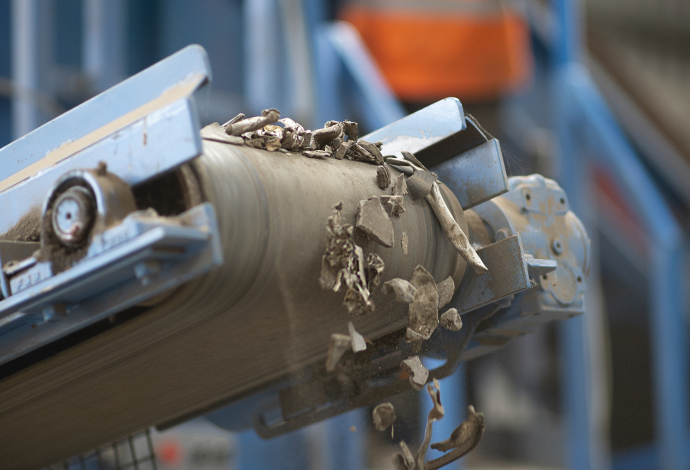AI-Powered Sorting in Metal Recycling: Game-Changer or Overhyped?
15/10/2025
As sustainability pressures rise and recycling technology advances, artificial intelligence (AI) is being hailed as a revolution in metal recovery.
From object recognition to data-driven sorting, AI-powered systems promise unprecedented precision. But here’s the reality: AI is not a magic solution. It’s only as good as the material it receives. Without clean, well-separated input, even the smartest AI system will deliver subpar results.
At the heart of every successful recycling plant lies proven mechanical separation - and that’s where BlakerTech leads the way.

The Core: Why the Eddy Current Separator Comes First
Before AI-based sorters can work effectively, material must be clean, consistent, and free from non-target contamination. That process begins upstream, with high-performance separation systems such as BlakerTech’s MagThro™ Eddy Current Separator.
The MagThro™ is engineered to deliver:
• Precise non-ferrous metal recovery
• Consistent feed presentation
• High throughput for downstream systems
• Low maintenance, high reliability
This foundation is what allows any subsequent AI or optical sorting technology to perform at its best.
Without this essential stage, AI cameras and algorithms face mixed, dirty or overlapping materials - leading to misidentification, reduced recovery, and increased rejects.
Understanding the Role of AI in Metal Sorting
AI improves metal recycling by using cameras, sensors, and machine learning to identify and separate metals by type or alloy composition.
However, these AI-based machines work downstream - after mechanical separation - and depend on a clean feed of non-ferrous material.
When integrated properly, AI sorting can:
- Refine grades of aluminium, copper, and other metals
- Improve purity for resale
- Reduce manual quality control
- Support real-time data analysis
But these benefits rely entirely on effective pre-sorting and feed conditioning - exactly what BlakerTech’s systems are designed to achieve.
Why Mechanical Separation Still Matters Most
Some recyclers assume AI can solve every sorting challenge. In reality, it can’t.
AI doesn’t replace Eddy Current Separators, density separation systems, or magnetic recovery lines - it relies on them to do their job first.
Mechanical systems (like MagThro™) handle:
- Bulk throughput
- Primary separation
- Material conditioning
AI systems handle:
- Fine sorting
- Quality grading
- Data analysis
Together, they create a hybrid process that combines mechanical reliability with digital precision - but the order of operations matters.
We're Building the Foundation for Intelligent Recycling
At BlakerTech, we design and supply robust, high-performance metal recovery equipment that forms the backbone of modern recycling facilities.
Our systems - including MagThro™ Eddy Current Separators and SandFlo™ density separation units - are built to:
- Deliver clean, consistent outputs
- Operate reliably in harsh recycling environments
- Integrate easily with conveyors, feeders, or optional AI-based sorting units
- Support real-world ROI and uptime
So while AI may enhance the final stages of material recovery, BlakerTech ensures the process starts right - with dependable separation at the core.
Partnering with BlakerTech
For over a decade, we have supplied the machinery that underpins modern metal recycling: reliable, modular, and designed for performance.
We help recyclers across the UK and beyond design systems that combine mechanical efficiency with future-ready flexibility, ensuring your plant is AI-compatible when the time is right - but always built on proven engineering first.
Looking to strengthen your recycling line?
Contact our friendly team here to discuss your separation needs and explore how our MagThro™ and SandFlo™ systems can enhance your operation.


